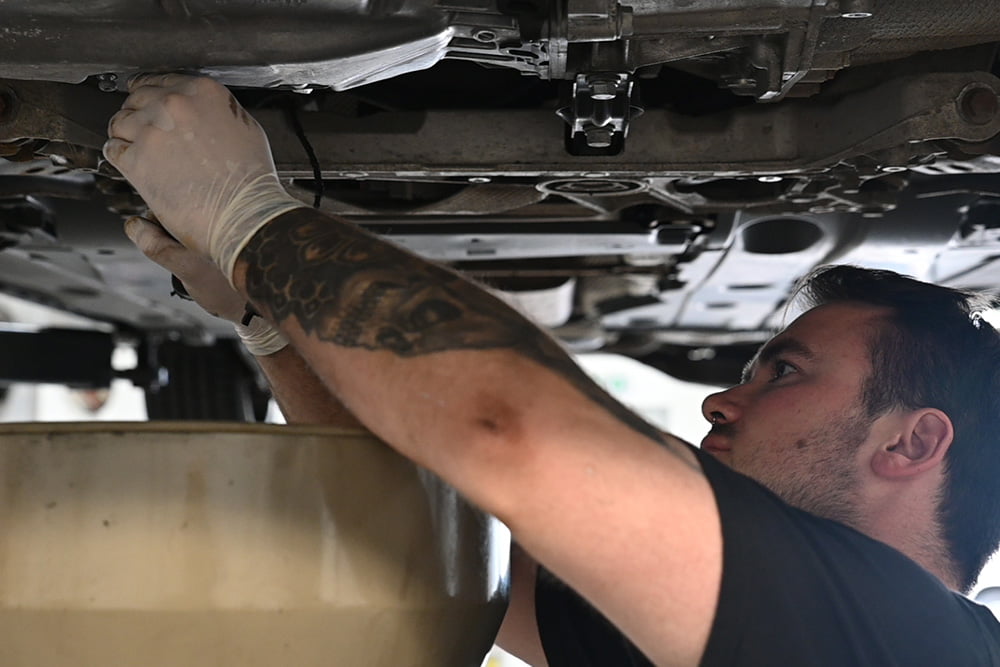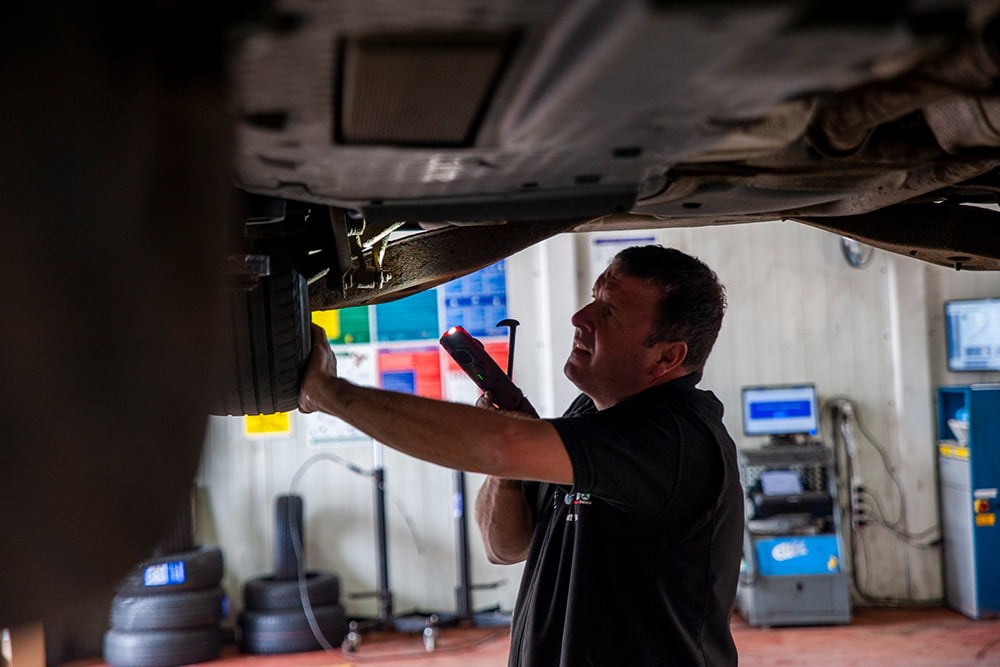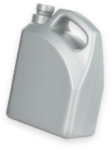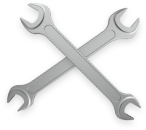What is checked in an MOT?

Having your vehicle’s MOT test carried out every year is not only mandatory by law, but essential in making sure that you’re safe to be on the road. Your mechanic will undergo a comprehensive list of checks to ensure that your vehicle is in good condition and safe to drive.
But what exactly is checked in your MOT inspection? Here we’ll go through each MOT component that’s checked as part of the test, so when your next MOT rolls around, you’re fully prepared and in the know.
What components are checked in an MOT?
The DVLA MOT checklist specifies a comprehensive list of checks to be done as part of the MOT. Let’s dive straight into it with the main elements that are checked during your MOT test.
The biggest part of this check is ensuring that all of your lights are working correctly. This includes headlights, rear lights, fog lights, brake lights and indicators, as well as reflective parts like the registration plate.
They must be found to be in good working order, not obstructed, secure, in the correct position and the correct colour. A blue tinge to your lights is accepted as long as the predominant colour is white.
Other checks covered as part of this section of the test include:
- Horn: must emit a continuous sound and be loud enough to be heard by other road users
- Electrical wiring: must be in good condition and unlikely to short circuit or become detached
- Battery: must be secure and not show any signs of leakage
- Towbars: any electrical sockets must be secure and working correctly
Tyre checks are another big part of the MOT test. Your mechanic will be checking for wear and tear, looking for bulges, cuts, cracks, and checking that the depth of the tread is correct – it needs to be at least 1.6mm.
They’ll also need to make sure that the tyres are the correct size, load rating and speed rating. As long as you’ve had any replacement tyres fitted correctly by an expert, this shouldn’t be a concern.
Wheels should be in a good condition, with all wheel nuts in place and tightly secured.
Your brakes will need to be in good condition, and any relevant warning lights operating correctly. Your mechanic will carry out a brake performance test to make sure the brakes are operating effectively.
They’ll also perform visual checks of the brake system, including brake pads and discs. Worn brake pads are one of the most common reasons for a MOT failure; if they’re worn down to below 1.5mm then the MOT will fail. If they’re worn to below 3mm, but above 1.5mm, then the test will pass you’ll be given an advisory and should have them replaced as soon as possible.
Your steering wheel will be checked to make sure it’s secure and in good condition. If your steering has a locking device, it should only come into effect when the engine isn’t running, and if your vehicle has power steering, it will need to contain a minimum amount of power steering fluid.
Suspension components and shock absorbers will also be checked for signs of wear and tear.
Your tester will check that the exhaust system is secure, and free of leaks. They’ll also check that your vehicle’s carbon monoxide and hydrocarbon emissions fall within the legal limit.
The technician will use a piece of equipment called a gas analyser probe to check the smoke that’s emitted while the engine is running. They’ll also check visually for excessive smoke from the exhaust, which could result in an MOT failure.
The MOT technician will also carry out a series of checks to ensure that the driver of the vehicle has a clear view of the road. There are a few checks that they’ll carry out here:
- Field of vision: ensuring that there’s nothing significantly blocking your view from the windscreen
- Condition of glass: checking the windscreen and windows for chips, cracks or other damage that could obscure your view
- View to rear: this covers making sure that the driver has a clear view behind the car, making sure that the rear window is clear, and that rear view mirrors are in the correct position
- Windscreen wipers: making sure that the windscreen wipers are present, in good condition and working as they should
- Windscreen washers: checking that the windscreen washers work correctly to clear the windscreen. You should make sure you have sufficient screenwash in the vehicle before taking it in for it’s MOT
There are a few additional general checks that the MOT technician will carry out as part of your MOT. This includes a visual inspection of the body, checking that all parts of the car are free from excessive damage or corrosion. The following will also be checked:
- Vehicle Identification Number (VIN): the vehicle should always display a legible VIN number. This is usually etched into a window by the manufacturer.
- Seat belts: seat belts need to be of the correct length and in good working order
- Registration plates: these should be clear and securely attached to the front and rear of the vehicle. The characters should also be correctly formed so they can be easily read – your registration plate should be easily legible from 20m away.
- Speedometer: all vehicles should be fitted with a speedometer, which is illuminated at night when headlights are switched on.
As you can see, MOT tests are very comprehensive and there are a lot of areas which could lead to a failed test. Don’t worry though, we’ve got you covered – we’re going to look at the most common reasons for a vehicle failing it’s MOT, and what you can do to minimise the risk of that happening.

Common reasons for failing an MOT, and how to avoid them
So, what are the most common reasons for a car failing an MOT?
This is the most common cause of failing an MOT – around 18% of MOT fails are caused by an issue with lights. Most often, this is simply to do with a blown bulb, which is easily rectified – you just need to have the bulb replaced.
The best way to make sure that your vehicle doesn’t fail its MOT based on lighting is simply to check all of the lights ahead of the test. Ask a family member or friend to sit in the vehicle and activate all of the lights and the indicators, while you walk around the car and make sure they’re all working correctly.
You can also do this by yourself, by positioning the car in front of a reflective surface – like a glass-fronted shop.
One in 10 MOT failures are down to the braking system. As we’ve mentioned earlier, brake pads that are worn to below 1.5mm will cause an MOT to fail.
Before your MOT, you should check your brake pads and discs. Pay attention to any screeching or grinding noises, or the car pulling off to the side when braking – these are signs that your brakes need some attention.
You should also check your handbrake – park up on a hill and make sure it holds the vehicle. If it doesn’t and the car starts to roll, your handbrake may need adjusting.
Having your brakes in good condition is essential for safety on the road. Why not book in for a brake check with a Vasstech expert, for ultimate peace of mind?
Tyres are next on the list of common MOT failures. The good news is, you can easily check to make sure your tyres are up to scratch. You can visually check them for any signs of damage, like bulging or cracks, and you can check the tread depth using a 20p coin.
Just place a 20p coin into the main tread grooves of the tyre – if the outer edge of the coin is visible, then your tread depth is below 1.6mm and will cause the MOT to fail.
If you do spot any issues with your tyres, you should definitely arrange for a tyre replacement ahead of your MOT test, so save you the hassle of a fail.
Another common cause of MOT failure is not having an unobstructed view of the road. Large chips or cracks in the windscreen, damaged wiper blades, or even having no screenwash are all potential causes of a failed MOT.
You can avoid this by making sure you have any damage to your windscreen repaired, checking that your wipers are up to scratch, and making sure to top up your screenwash before the test. Simple!
How to make sure your car passes its MOT
The above explains how you can check your own car for potential issues that could cause your MOT to fail. However, the best way to make sure your vehicle is in good condition and will pass the test is to keep up with regular maintenance and servicing throughout the year.
Simple measures like checking your tyres regularly and keeping your oil topped up will keep your vehicle running smoothly, and reduce the risk of damage which could impact the MOT.
You should also book your vehicle in for a service every year. An expert Vasstech technician will carry out some essential maintenance work on the vehicle, including changing the oil, replacing brake pads where required and changing the bulbs in your lights. All of this reduces the risk of problems when MOT time rolls around.
If you’d like to make your MOT and service more cost effective and efficient, you could take advantage of Vasstech’s handy MOT and service package. We’ll roll both into one, making your trip to the garage easy and hassle free.
Ready to book your MOT?
At Vasstech, we’re the MOT experts. With 15 years of experience under our belts, you can be confident that we’ll keep your car safely on the road. Book your MOT at one of our five garages today.


